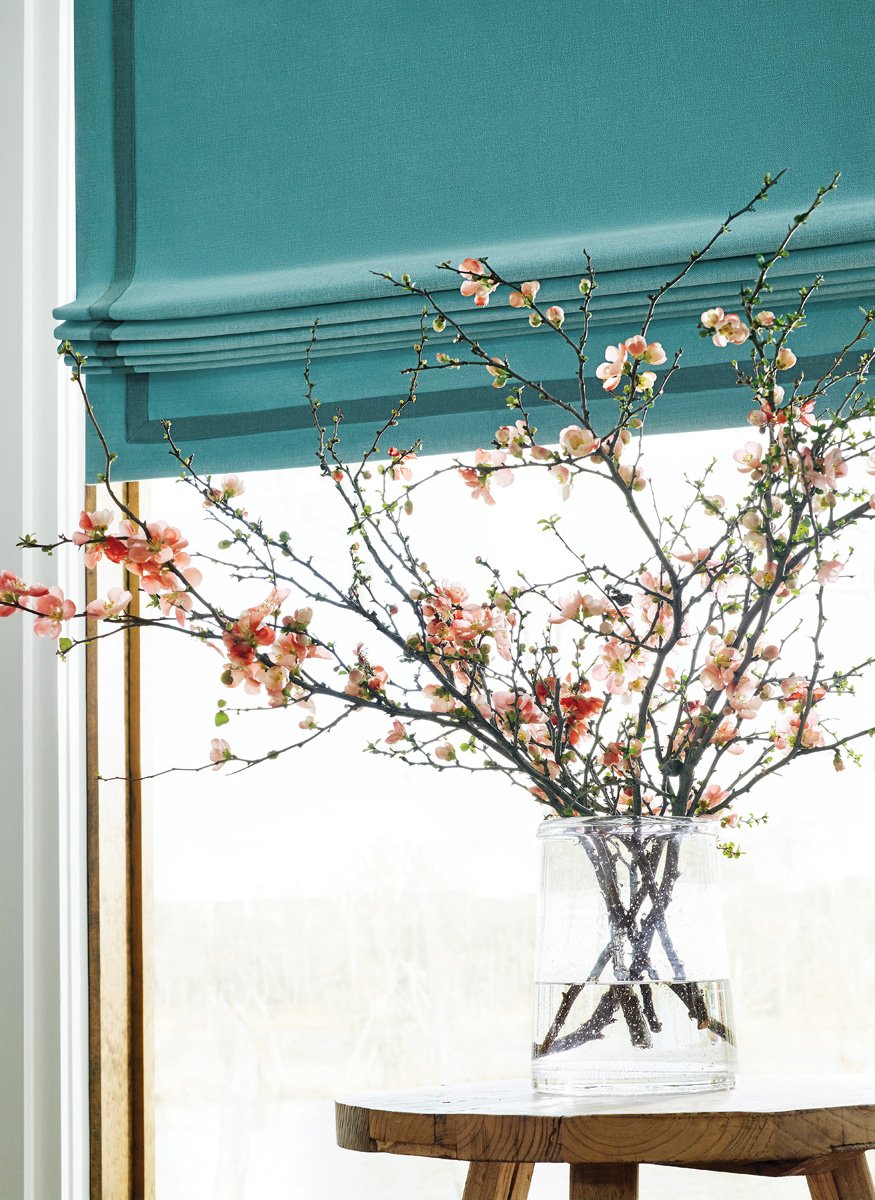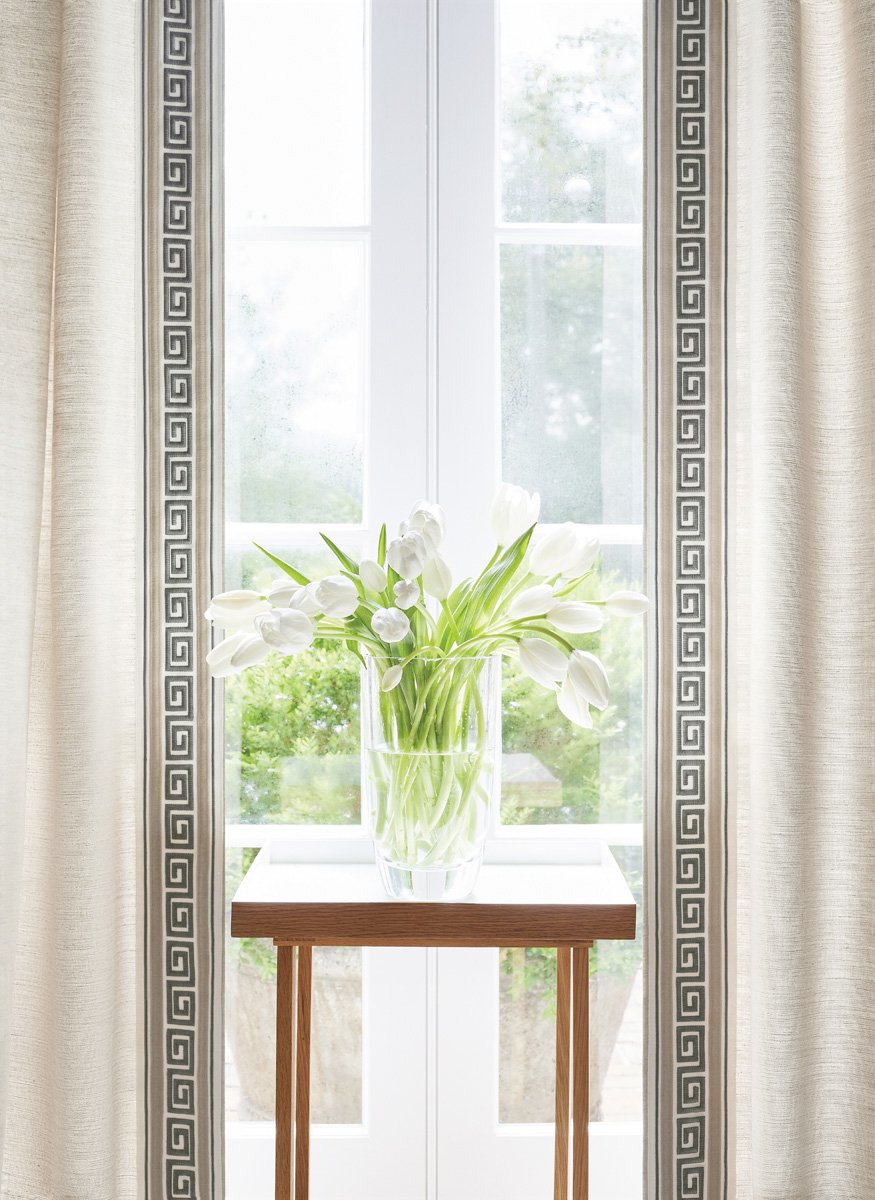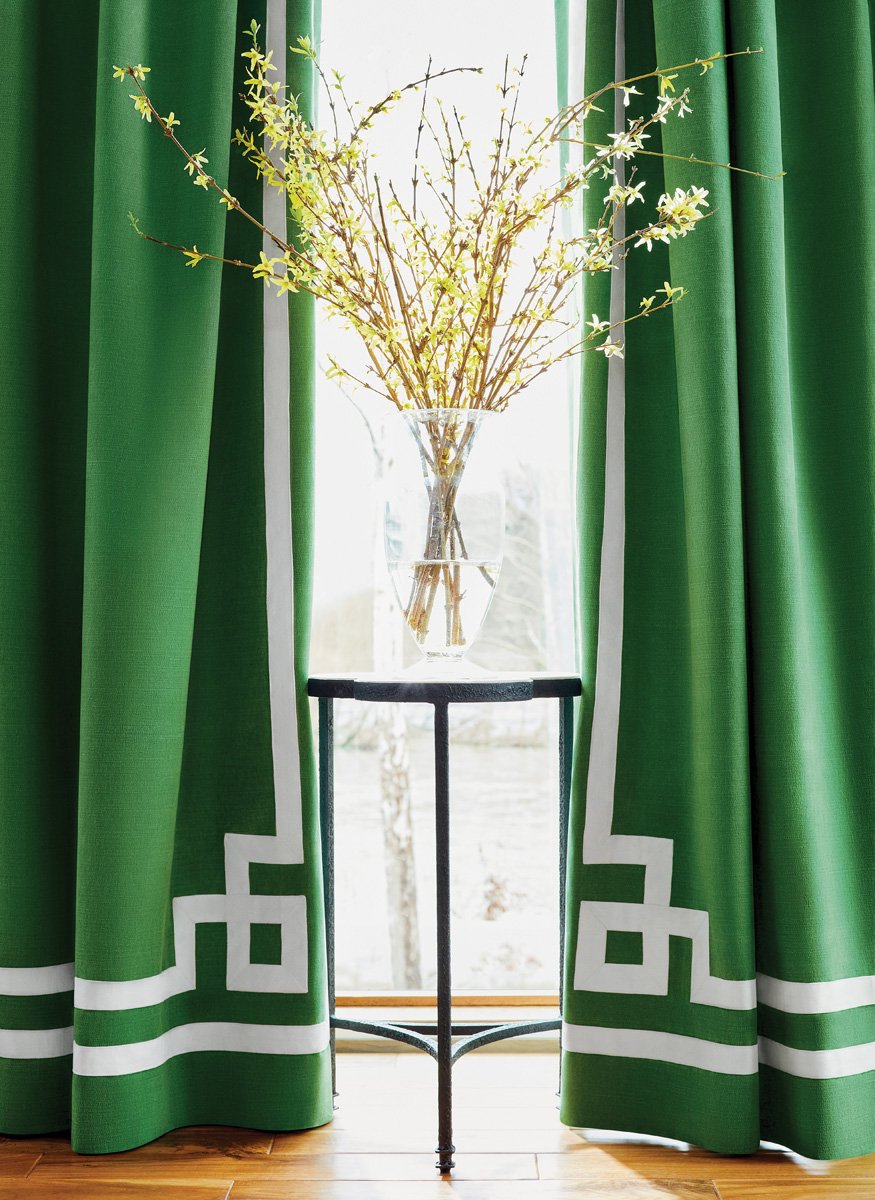Window Treatment Trends
When shopping for window treatments, there are many considerations that factor into the decision-making process including purpose, style, functionality, and cost. Let’s look at the trends for window treatments in 2022.
PERUSE WITH A PURPOSE
Window treatments can serve many purposes, and no two installations are the same, according to interior designer Erin Kent of Erin Kent Interiors (www.erinkentinteriors.com). “When working with my clients, I ask ‘What will the window treatments need to do in the room?’” For example, you may want to block light in the bedrooms but only diffuse light in other rooms; and sometimes a window treatment is purely aesthetic.
Standard window coverings include sheers, curtains/drapes, shades (Roman, roller, cellular), blinds, and shutters. Newer options include room-darkening roller shades with dual panels that allow you to control the amount of light that filters through, and multi-functioning cellular shades that either filter light and provide modest privacy or block light and offer complete privacy.
READ THE ROOM
Of late, many homeowners are placing more emphasis on the windows and trim. “Overall, I would say that I’m seeing more windows left open, or uncovered, especially if there is beautiful trim and/or woodwork,” Kent said. But when window treatments are in order, Kent sees her clients opting for fabrics that look and feel natural and add texture and contrast to the room. This is in line with what manufacturers are featuring this year: earthy, neutral colors, natural wood tones, and organic fabrics and textures.
Sarah Clere, manager of operations for The Fabric Mill and Décor Fabrics & Design has her own interpretation of Kent’s observation. “I think the trend for window treatments has really been a move towards simplicity and neutrality, which in my opinion isn’t really a trend but a nod to committing to a classic look,” Clere said.
Neutral doesn’t mean boring, though. Clere recommends adding embellishments to plain drapes. Tape trims, for example, come in a variety of sizes, color combinations, and textures. Another classic embellishment Clere recommends for cornice window treatments is nail heads, which come in a variety of sizes and finishes, and can be applied in a design or pattern.
FUNCTIONALITY MATTERS
A window treatment’s functionality has more to do with lifestyle, however, than décor style. For example, blinds and shades are harder to clean than curtains, but lend themselves to automation. So, if you like the idea of being able to control the amount of natural light in a room with a touch of a button on a remote control or smart phone, blinds and shades are good options.
Curtains aren’t usually automated (although, they can be), so their functionality has more to do with the hardware used to hang them. The latest trend is acrylic rods, which draw less attention away from the drapes and don’t cover up decorative trim. If you want the functionality of shades but the look of curtains, one option is to hang single panels extending past both sides of the window. This technique renders the curtains purely decorative and creates the illusion of a bigger window.
BUDGETARY CONSIDERATIONS
In the end, how much you spend on window treatments depends on their purpose, style, and functionality. Consider each factor in your decision-making process to get window treatments that work as good as they look, for years to come.





